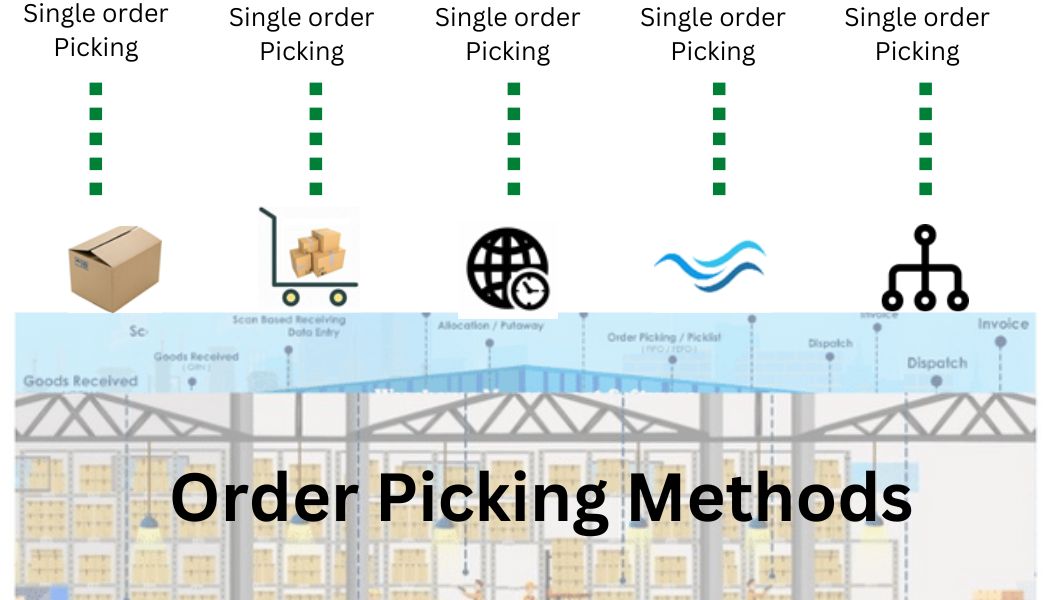Order Picking Paperwork: 5 Essential Tasks Explained

Order picking is the process of retrieving items from storage to fulfill customer orders in a warehouse setting. This vital operational task not only affects the accuracy of order fulfillment but also significantly influences overall warehouse efficiency. The paperwork involved in order picking might seem daunting at first, but understanding the essential tasks can streamline the process and minimize errors. Here, we will explore five critical steps that make up the backbone of effective order picking documentation.
1. Picking Slips


The picking slip is the primary document that order pickers use. This slip contains:
- Order number for reference
- Customer information for delivery purposes
- Item details: SKU, quantity, and sometimes location within the warehouse
- Notes or special handling instructions
The accuracy of this document is paramount to ensure that the correct items in the correct quantities are retrieved.
📝 Note: Ensure that the picking slip is checked for accuracy before distribution to avoid picking mistakes.
2. Batch Picking Sheets


For large or high-volume warehouses, batch picking is often used to optimize the picking process. Here’s how it works:
- Multiple orders are grouped into a single batch for picking
- The batch picking sheet lists all the items to be picked, allowing for a more efficient route through the warehouse
- Consolidates trips, saving time and reducing transportation costs
🌟 Note: Batch picking reduces travel time but requires careful planning to ensure accurate order allocation.
3. Location Tags

Warehouse layouts can be complex, making navigation challenging. Here are some key elements:
- Location tags help workers find items quickly by indicating the specific storage spot
- Include zone numbers, row numbers, and bin/shelf identifiers
Having an organized layout with clearly marked locations:
- Speeds up picking
- Reduces time lost looking for items
- Minimizes picking errors
4. Packing Lists


Once items are picked, they move to the packing stage. Here, the packing list becomes crucial:
- Includes all items from the original picking slip
- Ensures every item is accounted for before the package is sealed
- May include special packing instructions or handling requirements
This list ensures that:
- Everything picked is packed correctly
- Discrepancies can be resolved immediately
🔍 Note: The packing list should be cross-checked with the picking slip to catch any errors early.
5. Inventory Sheets

Inventory sheets or electronic inventory management systems are used to track the movement of goods. They include:
- Initial quantities before picking
- Quantities picked
- Remaining stock
Their functions are:
- To maintain stock accuracy
- Facilitate reorder points
- Ensure that warehouse operations run smoothly without overstock or stockouts
In conclusion, mastering the paperwork associated with order picking is fundamental to maintaining an effective and efficient warehouse operation. Each document plays a vital role in ensuring that orders are picked, packed, and shipped correctly. By implementing these tasks, businesses can reduce errors, improve workflow, and enhance customer satisfaction. Remember, proper documentation isn’t just about record-keeping; it’s about optimizing your entire order fulfillment process to keep your warehouse humming along smoothly.
What is the purpose of a picking slip?

+
The picking slip guides the order picker on what, how much, and from where to pick the items needed for customer orders.
Why is batch picking useful?

+
Batch picking consolidates multiple orders into one picking route, reducing travel time within the warehouse, thus improving efficiency and reducing labor costs.
How do location tags assist in order picking?

+
Location tags help navigate the warehouse by providing clear indications of where each item is stored, making the picking process faster and more accurate.